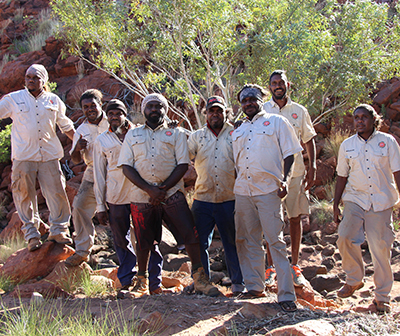
Project: 3.2.2.2
Monitoring Threatened Species on Indigenous lands: Bilbies in the Martu Determination
Project Leaders: Brendan Wintle , Anja Skroblin
Research in Brief
Martu people are traditional owners of over 14 million hectares of the western deserts, one of the last strongholds of the greater bilby. The project is combining Indigenous knowledge and Western scientific techniques to create and establish bilby monitoring and data management programs that will be implemented by Martu Kanyirninpa Jukurrpa Rangers.
Establishing a robust monitoring program will allow Martu people to evaluate the effectiveness of land management strategies. Local co-design of the method will ensure it is practical and relevant to the rangers who will implement it long-term, and data should be informative to national recovery planning.
Why is the research needed?
Greater bilbies were once prevalent across much of Australia. They are now largely restricted to Indigenous-managed lands in the north-west of their previous range. Evidence indicates that the overall range is still contracting, and that declines are taking place locally within the distribution.
The Martu Determination is one of the last strongholds of bilbies. It is also one of the largest Indigenous determinations in Australia, and encompasses some of the continent’s most intact deserts. Bilby declines have been observed by Martu on their country, and Martu attribute these declines to ecological changes due to changes in land use (including changed burning) and/or rainfall patterns, predation by cats and foxes, and competition from rabbits.
However, the increase of Indigenous-managed lands presents an opportunity to develop new techniques that combine Indigenous ecological knowledge with Western scientific approaches to data capture and interpretation.
Traditional fire practices need to be applied to maintain habitat for the greater bilby. Martu have a holistic approach to using fire to look after bilbies. Burning a patchwork of small fires breaks up old vegetation, making different vegetation stages available, which is important to bilbies. A balance needs to be found between too much fire and not enough.
Predation from feral cats and foxes and competition from rabbits are the other two main threats. Cats not only prey on bilbies but use their burrows, as do rabbits. Foxes, despite their lower numbers, are believed to pose an even greater predation threat than cats.
 KJ rangers carrying out Martu style burning. Photo: Anja Skroblin
KJ rangers carrying out Martu style burning. Photo: Anja Skroblin
How will the research help?
This project is developing a threatened species monitoring program tailored to the requirements of Indigenous land holders to allow them to assess trends and make decisions to implement management on their lands. This requires an approach that both respects the priorities of traditional owners and the needs of threatened species.
The project is co-directed by Martu to guide the development of methodology and ensure that outputs are useful to end-users. The monitoring program relies on the combination of Martu ecological knowledge and approaches to assessing country with Western science to deliver multiple benefits including: enhanced data quality; improved ranger engagement; training opportunities; and archiving of Indigenous knowledge.
The project provides a case study of good practice in integrating Indigenous ecological values and knowledge with Western science approaches to quantitative analyses. The information collected will guide management activities that Indigenous groups undertake to maintain and enhance bilby habitat and potentially other threatened species.
What research activities are being undertaken?
The project will develop a best-practice monitoring approach that will be applied by Martu rangers to determine bilby population trends, and the impact of management (fire and predator control) on their country over time. This approach includes development of:
- a survey methodology tailored to Indigenous rangers, which attempts to maximise detectability of bilbies during sign-based searches
- a novel approach to species distribution modelling that is based on Indigenous knowledge and scientific surveys
- optimisation of monitoring effort to detect trends in bilby populations, by carrying out spatially explicit power analyses
The monitoring program involves four Indigenous ranger teams that are applying two-way approaches to gathering information on the distribution, habitat associations, status and trends of bilbies across the Martu Determination.
Additional information will be collected on the distribution of bilby food plants, threatening feral species (cats, foxes and rabbits) and the impact of fire patterns.
The research team will steward the first year of monitoring and data analysis through collection, analysis and publication of the new data and approach. Management activities such as fire and predator control are out of the scope of this work.
 Motion camera image of a bilby. Photo: Kanyirninpa Jukurrpa
Motion camera image of a bilby. Photo: Kanyirninpa Jukurrpa
Who is involved?
The project is a collaboration between researchers at the University of Melbourne and the traditional owners of the Martu Determination through Kanyirninpa Jukurrpa (KJ). The Nature Conservancy and BHP are important partners of KJ and support Martu bilby programs.
This project was also supported by Rangelands NRM through funding from the Australian Government’s National Landcare Program.
Where is the research happening?
The research is taking place in the Martu Determination in Western Australia.
When is the research happening?
This project began in 2016, and will run until December 2018.
Further information
For more information please contact:
Dr Anja Skroblin - anja.skroblin@unimelb.edu.au
Top image: KJ Jigalong rangers pointing out an active bilby burrow. Photo: Anja Skroblin
-
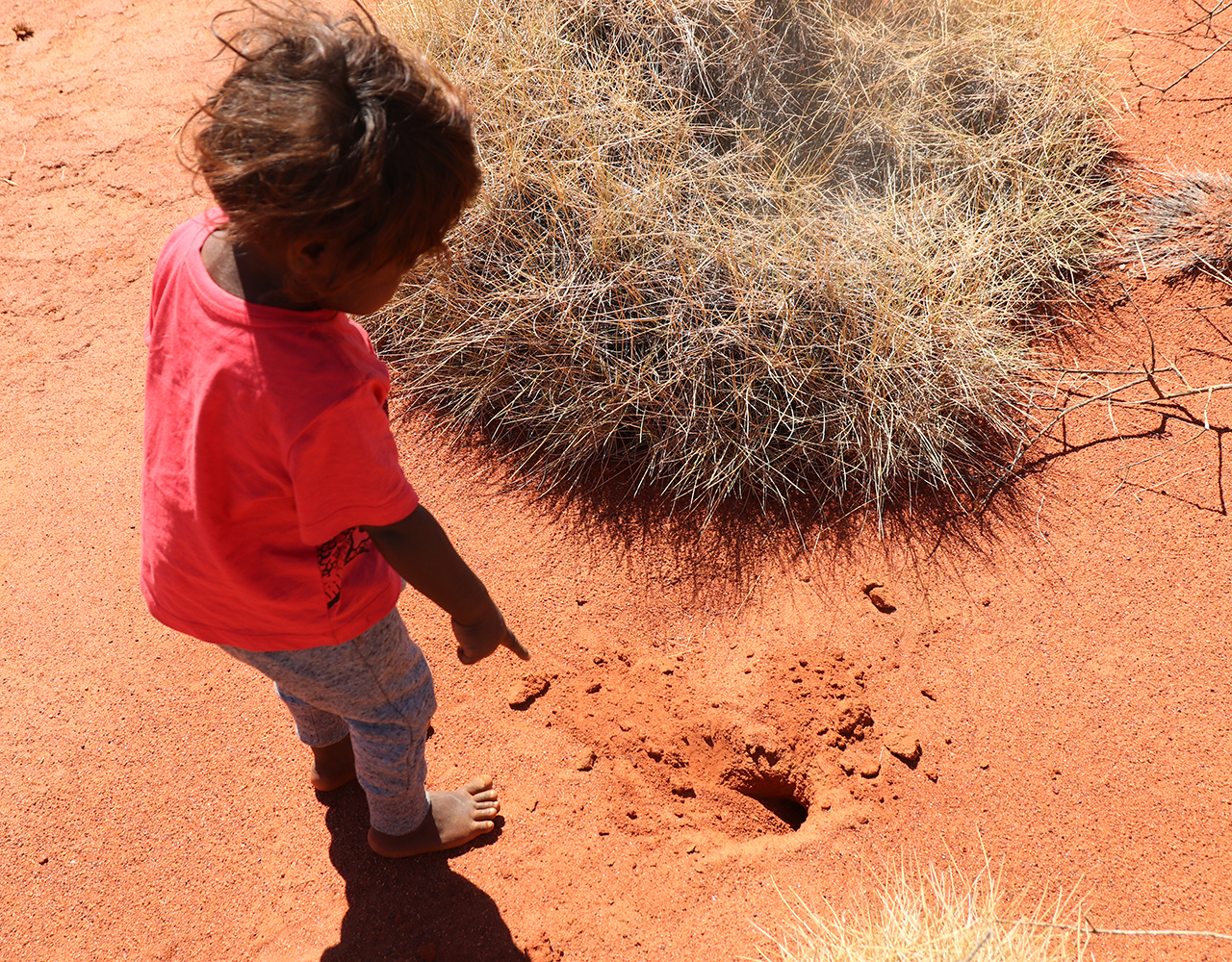
Kids learning to track Mankarr on Martu Country
Wednesday, 28 October 2020 -
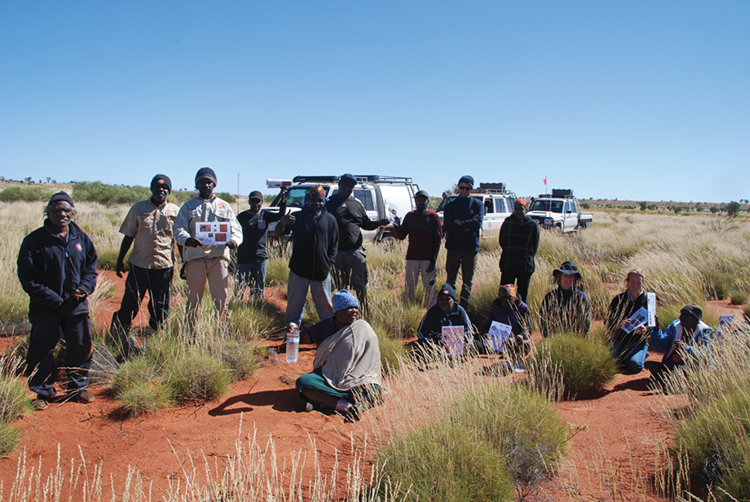
A Martu method for monitoring mankarr (greater bilby)
Tuesday, 20 August 2019 -
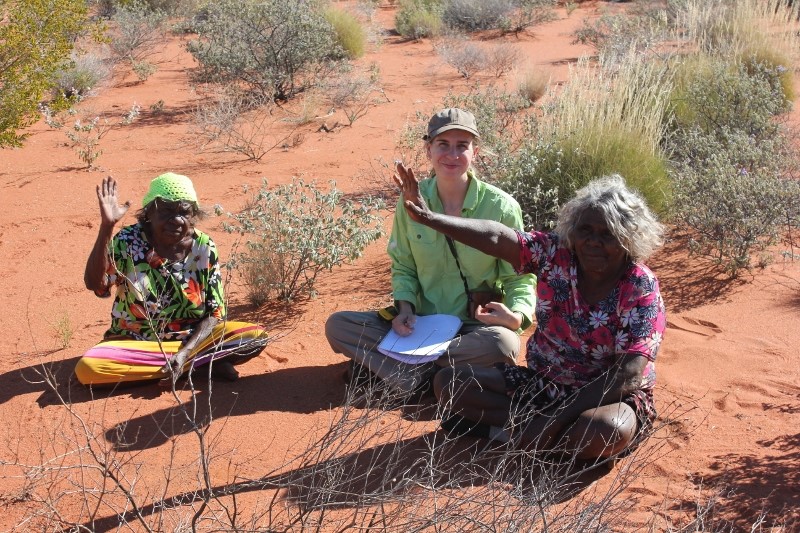
Designing a best-practice bilby monitoring program for Martu rangers
Thursday, 15 December 2016 -
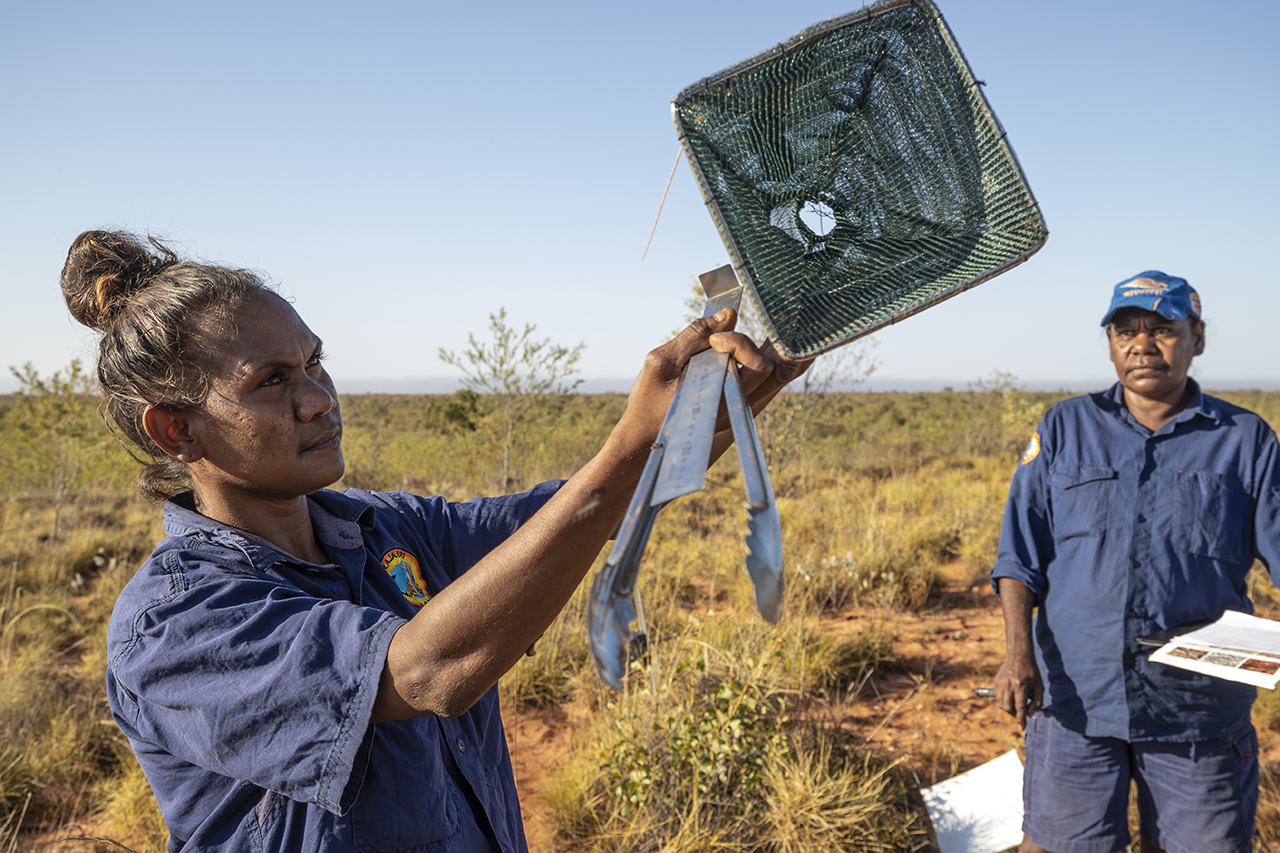
Indigenous Engagement Protocols: Forging respectful, meaningful partnerships for research impact
Wednesday, 21 October 2020



